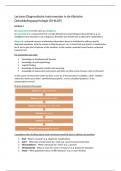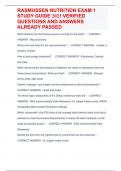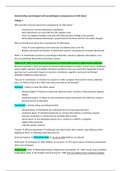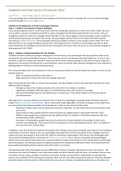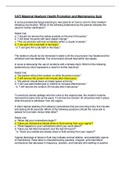Samenvatting
Samenvatting hoorcolleges diagnostische instrumenten in de klinische ontwikkelingspsychologie (KLOP-DI)
- Vak
- Instelling
Dit document bevat een samenvatting van de 4 hoorcolleges van de cursus diagnostische instrumenten in de klinische ontwikkelingspsychologie (KLOP-DI). Bij deze samenvatting zijn belangrijke begrippen (gekleurd) dikgedrukt weergegeven. Hiernaast zijn er soms afbeeldingen toegevoegd voor verduidelijk...
[Meer zien]
